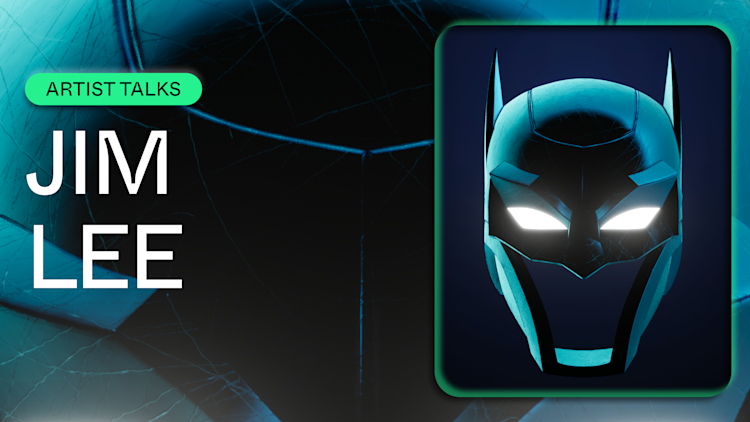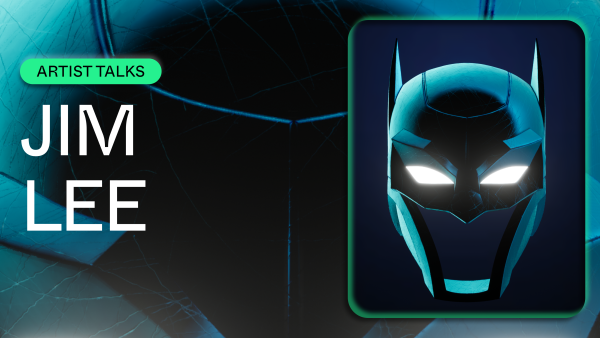Inside DC3: An Interview With Jim Lee


Over the course of the past two years, we’ve been on a journey. We’ve seen mysterious discs surface. We’ve heeded the call. Participated in a little mayhem. Stood for justice. And delved deep into the world of comic NFTs: from Superman to Green Lantern.
There are countless secrets to uncover in the DC NFT universe. Last week, DC Publisher and Chief Creative Officer Jim Lee stopped by Twitter Spaces to talk about the art and experience of DC3, and the world to come.
What was the thought process behind creating these new versions of classic comics? What was the first part of the vision that came to your mind?
Drawing upon my own experiences as a collector of comic books and using that knowledge as the North Star for how we make decisions around these NFTs has been instrumental.
For the older, physical comics – the grade, the condition of the comic is paramount. It’s a scale from 0 to 10. Older comics are well-read and well-traded amongst readers and fans, and so they get wear and tear. But, for newly published printed comics, people are savvy to the fact that comic books can be worth money, so you don't see anything new in really bad shape anymore. Using that bit of information, I was like, it'd be kind of fun to actually weather the digital comics. Make them look like they have been well-read and traded, just like the way you would find these out in the wild, in real life.
So that was the initial thinking. And then, we challenged our design and production team to come up with a look. We didn't just find copies and scan them. It was all done digitally from scratch, which is amazing and speaks to the amazing talent and abilities of our design and production team. That was a lot of fun. And people dug it because it's not something else you see out in the marketplace; it’s a definite tip of the hat to the legacy of comic book collecting.
For the modern comics, the rarities are based on different covers. And that actually mirrors the desirability of physical comics. Almost everything we do has some sort of historical significance: the first appearance of character, the first appearance of a concept, and so on.
And then there are variant covers. Some variant covers have gone for thousands of dollars. So we wanted to lean into that aspect of modern-day comic book collecting. People are really into chasing variants and exclusive variants. With the variant covers, if you don’t see that it's “rare” or “epic” or “legendary”, you can tell based on the design or the color scheme.
We’re drawing upon decades of physical comic book collecting experience, and a knowledge of what drives that collectibility. We recognize that these digital collectible comics are going to hit differently, but adjacently, with the collector audience.
The data really kind of shines a future path going forward. And so I think in two years, in five years, what we're offering we will be different. It will be fully informed and guided and directed by our collecting community, which is exciting, because you don't have that physical space.
Tell us a little bit about the work that went into the distressing of the comics? What was the process like to develop? How many versions of the covers and pages did you all review before you came up with the final ones for at least those first early DC3s?
In the early days, we tried to map it to the actual 10 point scale that I mentioned before. We tried to map it to that: fine, very fine, good, very, very good. And then mint condition, near mint condition, that kind of thing. But what we found is that the differences between the distressed covers at those different grades, really, was not noticeable. You had to really zoom in to see a little crinkle on the spine, or a chip on the corner, discoloration or whatever. So, we pushed the team to go a little crazier. Let's not worry about the number grading, let's create five looks that are easily and distinctly different from the get-go. And then they started having fun. They started putting tape and a stamp, and all sorts of water stains on the uncommons. To the point where we actually had to pull it back a little bit; like I think there was one cover in three pieces with scotch tape holding it together like this archipelago of art.
So there's a little bit of modulation, but at this point, the team is so good, and they understand what we're trying to achieve. We didn't want to make the distressed look like something that was done in a cookie cutter process or copy and pasted; where you see the same sort of defects or discolorations in different spots. We stressed them to make them bespoke, unique. And every distressed comic should look different from the others. To their credit, they've blown it out of the park every time so it's been really fun to watch.
This is all digital. We have a vast archive library of all our content – we just pull the file and then the team goes to town. And I mean, look, these are pros, these are the best in the class in terms of what they do.
What is your favorite DC collectible comic that has been dropped to date?
Superman (1939-2011) #1, because it launched everything and created all this discussion around the process of it all. So that's my favorite of the ones that have come out.
Part of the release schedule is around special moments in DC history. So you're getting a digital commemoration of the introduction of a character or the rebooting of a classic character or the introduction of storylines that change everything.
What are you excited about in 2023 for DC Collectible Comics and Gotham City District Knightwatch? I know that there are going to be so many new things in the new year that we can explore and play with.
What I love about this is that the future is that it’s still uncharted territory. And that's exciting as a creative. But what I'm sort of thinking is how do we bring it all together? Do we just keep throwing in different collectibles? Or do we figure out a way to bring it all together?
In physics there's this thing called Unified Field Theory. People understood how magnetism and electricity and light all work, but then they figured out that it's all interrelated and that you can put it all together. They got to a pretty good approximation of how it all worked as one equation. And so what I would like to see in the space is that it's not just: here are the Bat Cowl Holders, here are the DC3 owners, here are the people that are really into the Sigils, and here are the people that are really into the creation of the Batman: The Legacy Cowl comic book.
How do we bring this all together, so that everything relates and inspires and motivates and directs each other? So it's not just like, you collect this and I collect that–we're all collecting sort of the same thing. You all have a role to play within this giant ecosystem that we're creating.
That's the fun part of it. How do the Bat Cowls relate to the DC3s? And how does that relate to the GCDK neighborhoods? How does that relate to how we interact with the community and continue to engage with our NFTs? So that's the fun stuff that we're talking about this year.
Listen to the full Twitter Spaces recording here.
Explore the DC NFT universe.







